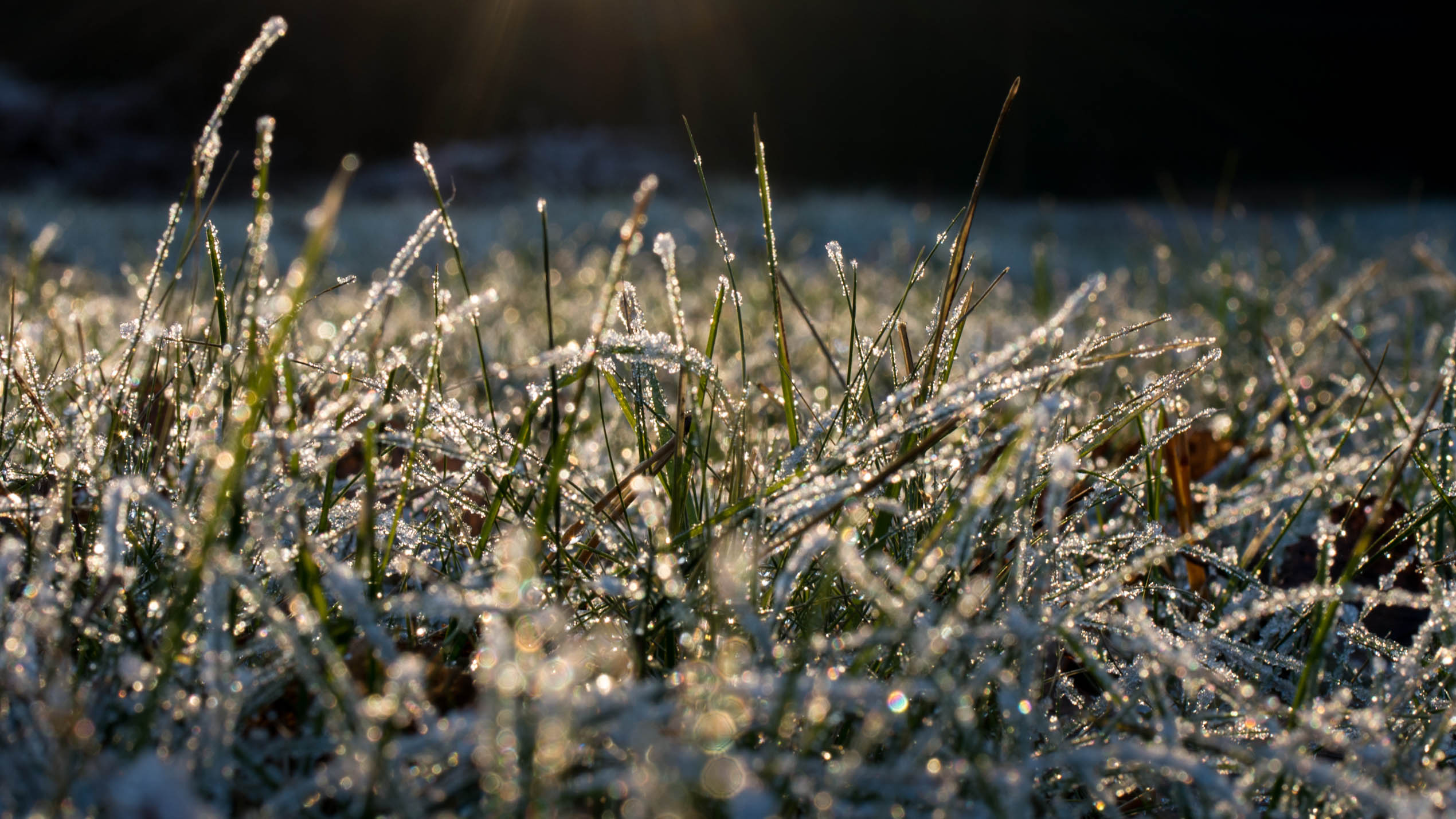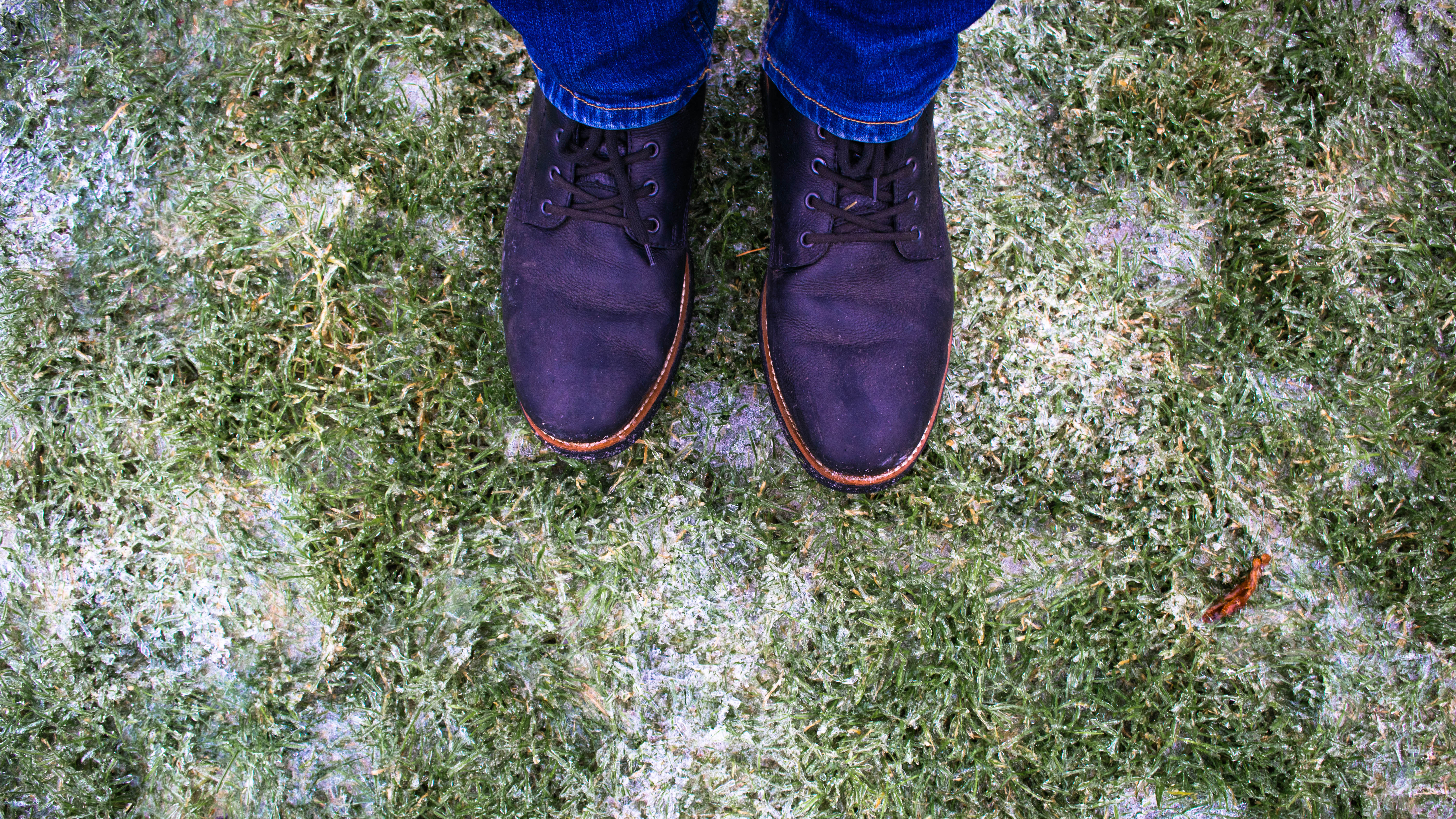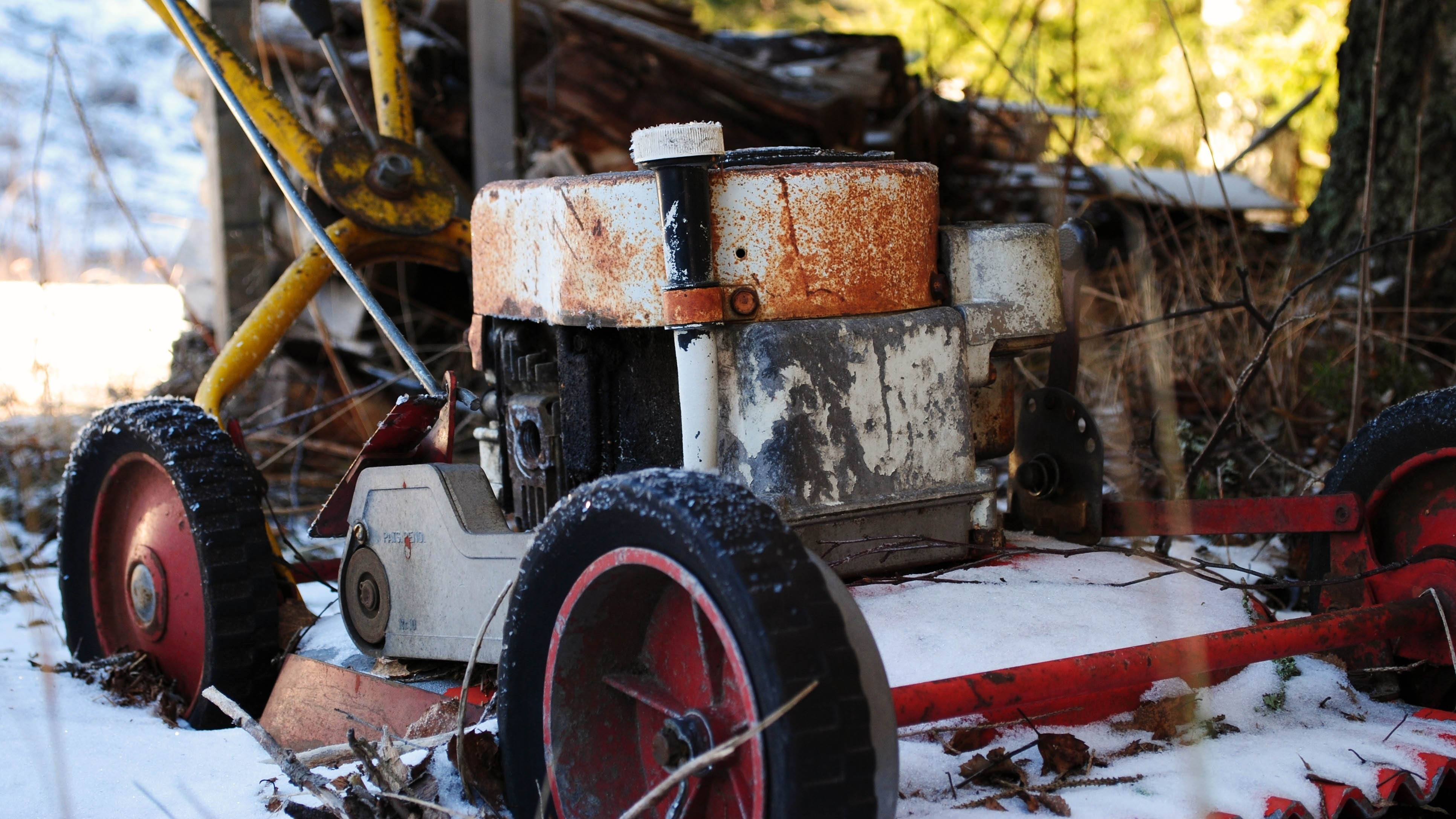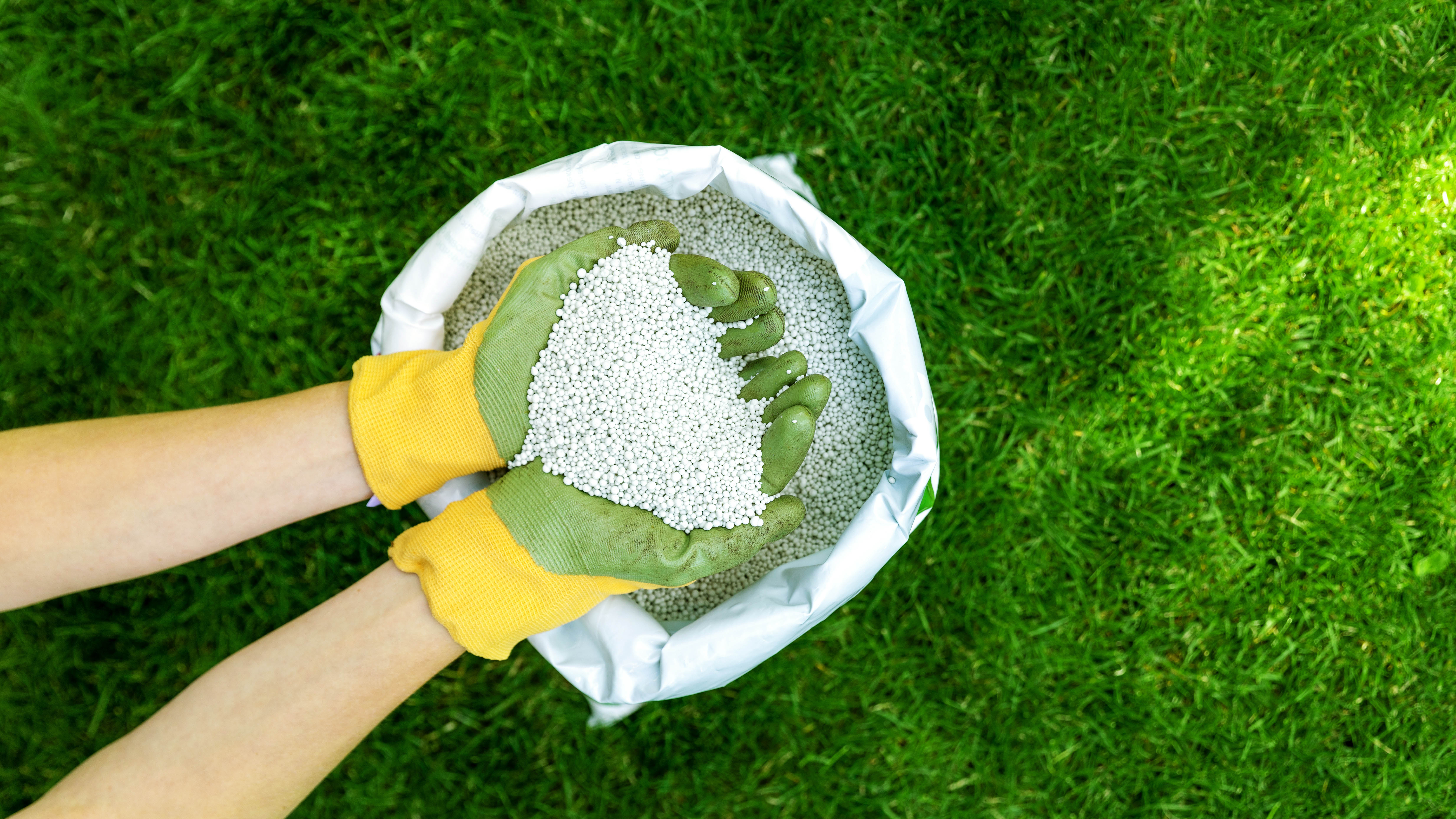5 mistakes you could be making with your lawn this winter

Now that the temperatures are plummeting, it’s time to prepare your lawn for winter and ensure you give it some much-needed TLC in order for it to handle those frosty temperatures.
But, whether you’re a keen gardener or amateur, there are some common mistakes you might be making with your lawn this winter. Generally, turf is dormant during the coldest months of the year, but it can still thrive with the best type of lawn care.
So, if you want to winterize your grass and beat the frost, make sure to avoid these 5 mistakes you’re making with your lawn this winter.
1. Applying salt on icy grass

Although we tend to defrost our driveways and garden paths to melt ice and frost, never apply salt to an icy lawn. What’s more, if the temperatures are still low, applying salt can cause even more damage to your lawn.
In addition, this can cause damage to some plants, particularly evergreens, and prevent regrowth. In the case of icy weather, it's always best to simply leave your lawn alone, and just allow it to completely thaw out and dry naturally.
2. Walking on frosty grass

If your evergreen lawn is now covered in glistening ice, avoid walking on the grass in frosty conditions. While you may love hearing the satisfying, winter ‘crunch’ under your walking boots, your grass won’t be satisfied.
Our lawns are already vulnerable to the icy conditions; however, it’s only once you walk on the grass that the damage occurs.
Get instant access to breaking news, the hottest reviews, great deals and helpful tips.
If you apply any foot pressure on a frosty lawn it will cause the frozen grass leaves to snap and break, potentially damage the root systems. In addition, this damage could compact the soil and cut off the water necessary to keep your plants healthy. So, limit walking on icy or frozen soil until the temperatures go back to normal, or until the grass is completely thawed to reduce the risk of damage. But if the grass is strong it will not be damaged by snow.
3. Mowing grass at the wrong time

Another common mistake is not knowing when should you stop mowing your lawn for the winter.
According to gardening experts, you should stop mowing your lawn once grass enters dormancy and temperatures drop below 50˚F. For most regions, this will usually be late October or during November. And for those living in drier climates or regions, mowing later than November is fine.
In addition, cutting your grass too short can do more damage than good, especially once the lawn has entered its dormant stage. Generally, it’s recommended to mow the grass until it’s cut to the height of around 2.5-3 inches. If the blades of grass are too short, your lawn may be deprived of the nutrients it needs to thrive for the next growth period.
Typically, once you’ve experienced the first, lingering frost, your grass has become dormant, and won’t require further mowing until spring. The grass blades will be extremely brittle, so the stress of mowing your lawn will only break the grass plant, causing severe damage
4. Using the wrong type of fertilizer or too much

It’s also common to think that using too much fertilizer will help our lawn thrive in the winter. However, too much will be detrimental to your lawn in extreme weather conditions. Instead, it will lead to a higher growth rate, which can lead to a shorter mowing season.
It’s important to use the right type of fertilizer, and opt for a specific autumn or winter fertiliser that is formulated for colder months. This will help to provide the right amount of nutrients to strengthen your grass, and put it in a strong position to handle frosty conditions.
Bear in mind that you need to fertilize before your grass is dormant. When the grass is dormant it won’t be strong enough to benefit from any extra nutrients you are applying.
5. Not keeping your lawn clean and tidy

Another common mistake is to not tend to your lawn, to keep it clear and tidy. Although you might enjoy the beauty of fall leaves, always rake dead leaves, branches or other garden debris when frost hits.
Generally, leaving wet leaves on your lawn in frosty weather will create the ideal breeding ground for ‘snow mold’ to develop. This type of lawn disease thrives in damp and dark conditions, and could cause severe damage to your grass or worse, kill your lawn.
In fact, gardening experts suggest using the dead leaves and debris to make mulch, and reuse in your garden. Mulch can be made using organic matter like decaying leaves, bark, straw, or compost. It’s best placed around the roots of plants to help insulate and protect them from the cold. What’s more, mulch can also be a great barrier to prevent weed growth — which will save you the time and effort of pulling out and killing unsightly weeds.
If you want more handy tips about reusing garden leaves, check out these 5 ways to use fallen leaves in your garden.
More from Tom's Guide
- If you have a large backyard, you may need to know how to use a leaf blower
- Be sure to also check out 7 lawnmower mistakes you’re probably making right now
- Plus, you'll need one of the best gardening gloves

As the Homes Content Editor, Cynthia Lawrence covers all things homes, interior decorating, and garden-related. She has a wealth of editorial experience testing the latest, ‘must-have’ home appliances, writing buying guides and the handy ‘how to’ features.
Her work has been published in various titles including, T3, Top Ten Reviews, Ideal Home, Real Homes, Livingetc. and House Beautiful, amongst many.
With a rather unhealthy obsession for all things homes and interiors, she also has an interior design blog for style inspiration and savvy storage solutions (get rid of that clutter!). When she’s not testing cool products, she’ll be searching online for more decor ideas to spruce up her family home or looking for a great bargain!
